
I always hated it when my heroines got married. As a child, I remember staring at the cover of The First Four Years, willing myself to feel pleased—as I knew I was meant to—that Laura Ingalls had wed Almanzo "Manly" Wilder and given birth to baby Rose. I understood that despite the hail storms, diphtheria outbreaks, and other agrarian misery that Wilder chronicled in the last of her Little House books, Laura's marriage and motherhood were supposed to be read as a happy ending. Yet, to me, it felt unhappy, as if Laura were over. And, in many ways, she was.
The images on the covers of previous Little House books, drawn by Garth Williams in the editions I owned, had been of Laura in motion, front and center: gamboling down a hillside, riding a horse barefoot, having a snowball fight. Here she was, stationary and solidly shod, beside her husband; the baby she held in her arms was the most lively figure in the scene. Laura's story was coming to a close. The tale that was worth telling about her was finished once she married.
"I always hated it when my heroines got married."
It was the same with Anne of Green Gables' Anne Shirley, whose days of getting her best friend Diana Barry drunk and competing at school with rival Gilbert Blythe were over when, at last, after three volumes of resistance and rejected proposals, she gave in and married Gilbert. Beloved Jo March, who, in Little Women, subverted the marriage plot by not marrying her best friend and neighbor Laurie, came to her clunky, connubial end by getting hitched to avuncular Professor Bhaer. And Jane Eyre: Oh, smart, resourceful, sad Jane. Her prize, readers, after a youth of fighting for some smidgen of autonomy? Marrying him: the bad-tempered guy who kept his first wife in the attic, wooed Jane through a series of elaborate head games, and was, by the time she landed him, blind and missing a hand.
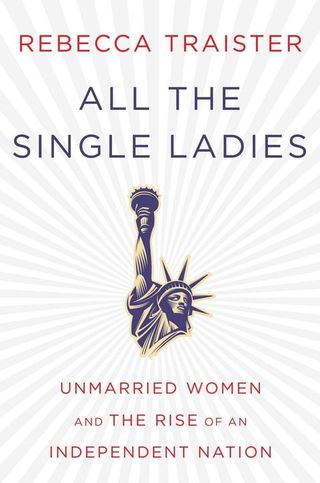
It was supposed to be romantic, but it felt bleak. Paths that were once wide and dotted with naughty friends and conspiratorial sisters and malevolent cousins, with scrapes and adventures and hopes and passions, had narrowed and now seemed to lead only to the tending of dull husbands and the rearing of insipid children to whom the stories soon would be turned over, in pallid follow-ups like Jo's Boys and Anne of Ingleside.
My dismay, of course, was partially symptomatic of the form. Coming-of-age-tales, bildungsroman, come to their tautological ends when their subjects reach adulthood. But embedded in the structure of both literature and life was the reality that for women, adulthood—and with it, the end of the story—was marriage.
Marriage, it seemed to me, walled my favorite fictional women off from the worlds in which they had once run free, or, if not free, then at least forward, with currents of narrative possibility at their backs. It was often at just the moment that their educations were complete and their childhood ambitions coming into focus that these troublesome, funny girls were suddenly contained, subsumed, and reduced by domesticity.
Later, I would learn that Shakespeare's comedies ended with wedlock and his tragedies with death, making marriage death's narrative equivalent and supporting my childhood hunch about its ability to shut down a story. My mother, a Shakespeare professor, would note wistfully to me that some of the Bard's feistiest and most loquacious heroines, including Beatrice in Much Ado about Nothing, ceased to have any lines after their dramatically conclusive marriage alliances.
Stay In The Know
Marie Claire email subscribers get intel on fashion and beauty trends, hot-off-the-press celebrity news, and more. Sign up here.
Weren't there any interesting fictional women out there who didn't get married as soon as they became grown-ups, I wondered, even as a kid.
As I got older, I would discover that yes, there were plenty of stories about women who didn't get married. I would read about Tar Baby's Jadine Childs, whose determination to flout gendered and racial expectations gets her cast out from her world, and about Theodore Dreiser's Sister Carrie, who barters sex for capital gain and ends up empty. I'd read Persuasion, about Anne Elliot, who, unmarried at 27, veers perilously close to an economically and socially unmoored fate before being saved from the indignity of spinsterhood by Captain Wentworth. I'd read about Hester Prynne and Miss Havisham and Edith Wharton's maddening, doomed Lily Bart.
These were not inspiring portraits. Collectively, they suggested that women who remained unmarried, whether by choice or by accident, were destined to wear red letters or spend their lives dancing in unused wedding dresses or overdose on chloral hydrate. These characters might not have wed, but their lack of husbands constrained and defined them, just as surely as marriage would have.
"History suggested that beyond the kegs and term papers in my immediate future, perhaps even tied up with them, the weird possibility of marriage loomed."
They seemed to confirm Simone de Beauvoir's observation about real life women, which I would also, eventually, uncover: that, by definition, we "are married, or have been, or plan to be, or suffer from not being."
By the time I was on the verge of becoming a woman, ready to leave home for college, nothing could have been more implausible to me than the notion of becoming a wife to anyone anytime soon. By most accounts, marriage was coming to swallow me up in just a few short years. However, with my mind firmly absorbed by picking classes, worrying about roommates and keg parties and finding a job near campus, nothing could have seemed less likely.
At 18, I had never even had a serious boyfriend, and neither had any of my closest girlfriends. The people I knew who were my age in the early 1990s didn't really "date." We hung out, hooked up, drank beer, smoked cigarettes and pot and some of us, but by no means all of us, had sex. Very few got into heavy romantic relationships. Sure, perhaps I was just a misfit girl destined never to fall in love (a suspicion I logged many hours cultivating), let alone marry. But actually, I couldn't envision any of my girlfriends married anytime soon either.
I was on the verge of tasting meaningful independence, of becoming myself. The notion that in a handful of years, I might be ready, even eager, to enter a committed, legal, purportedly permanent relationship with a new family and a new home was patently absurd.
Yet this was what had happened to practically every adult I knew in the generation before mine. Growing up in rural Maine, my mother had already had one serious boyfriend by the time that she turned 18. Many of the women with whom she'd gone to high school were married—or pregnant and on their way to getting married—by the time she'd left for college. As an undergraduate in the early 1960s, my mother would serve as a student guide to Betty Friedan when she visited campus to discuss The Feminine Mystique; she would also go on to marry my father at 21, days after her graduation, before getting her Masters and her PhD. My aunt, five years my mother's junior, had had a series of high school swains before meeting my uncle in college and marrying him at 23, also before getting her PhD. In this, my mother and aunt were not unusual. My friends' mothers, my mother's friends, my teachers: Most of them had met their spouses when in their early twenties.
Throughout America's history, the start of adult life for women—whatever else it might have been destined to include—had been typically marked by marriage. As long as there had been such records kept in the United States, since the late nineteenth century, the median age of first marriage for women had fluctuated between 20 and 22. This had been the shape, pattern, and definition of female life.
History suggested that beyond the kegs and term papers in my immediate future, perhaps even tied up with them, the weird possibility of marriage loomed. It loomed, in part, because there weren't very many appealing models of what other kinds of female life might take its place.
By the time I walked down the aisle—or rather, into a judge's chambers—I had lived 14 independent years, early adult years that my mother had spent married. I had made friends and fallen out with friends, had moved in and out of apartments, had been hired, fired, promoted, and quit. I had had roommates I liked and roommates I didn't like and I had lived on my own; I'd been on several forms of birth control and navigated a few serious medical questions; I'd paid my own bills and failed to pay my own bills; I'd fallen in love and fallen out of love and spent five consecutive years with nary a fling. I'd learned my way around new neighborhoods, felt scared and felt completely at home; I'd been heartbroken, afraid, jubilant, and bored. I was a grown-up: a reasonably complicated person. I'd become that person not in the company of any one man, but alongside my friends, my family, my city, my work, and, simply, by myself.
I was not alone.
In fact, in 2009, the proportion of American women who were married dropped below 50 percent. And that median age of first marriage that had remained between 20 and 22 from 1890 to 1980? Today, the median age of first marriage for women is around 27, and much higher than that in many cities. By our mid-thirties, half of my closest girlfriends remained unmarried.
"In fact, in 2009, the proportion of American women who were married dropped below 50 percent."
During the years in which I had come of age, American women had pioneered an entirely new kind of adulthood, one that was not kicked off by marriage, but by years and, in many cases, whole lives, lived on their own, outside matrimony. Those independent women were no longer aberrations, less stigmatized than ever before. Society had changed, permitting this revolution, but the revolution's beneficiaries were about to change the nation further: remapping the lifespan of women, redefining marriage and family, reimagining what wifeliness and motherhood entail, and, in short, altering the scope of possibility for over half the country's population.
For the first time in American history, single women (including those who were never married, widowed, divorced, or separated) outnumbered married women. Perhaps even more strikingly, the number of adults younger than 34 who had never married was up to 46 percent, 3 rising twelve percentage points in less than a decade. For women under 30, the likelihood of being married had become astonishingly small: Today, only around 20 percent of Americans are wed by age 29, compared to the nearly 60 percent in 1960. In a statement from the Population Reference Bureau, the fact that the proportion of young adults in the United States that has never been married is now bigger than the percentage that has married was called "a dramatic reversal."
For young women, for the first time, it is as normal to be unmarried as it is to be married, even if it doesn't always feel that way.
British journalist Hannah Betts wrote in 2013, "Ask what has changed most about society during my lifetime and I would answer: the evolution from the stigmatized 'spinsters' of my childhood . . . to the notion of the 'singularist,' which is how I would currently define myself at 41."
Young women today no longer have to wonder, as I did, what unmarried adult life for women might look like, surrounded as we are by examples of exactly this kind of existence. Today, the failure to comply with the marriage plot, while a source of frustration and economic hardship for many, does not lead directly to life as a social outcast or to a chloral hydrate prescription.
It is an invitation to wrestle with a whole new set of expectations about what female maturity entails, now that it is not shaped and defined by early marriage.
From All the Single Ladies, copyright ©2016 by Rebecca Traister. Reprinted by permission of Simon & Schuster, Inc.
Follow Marie Claire on Instagram for the latest celeb news, pretty pics, funny stuff, and an insider POV.
-
 Zendaya's Method Dressing Marathon Is Over
Zendaya's Method Dressing Marathon Is OverShe found a new way to serve in custom Vera Wang.
By Halie LeSavage Published
-
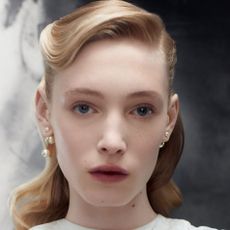 Bitten Lips Took Center Stage at Dior Fall 2024 Show
Bitten Lips Took Center Stage at Dior Fall 2024 ShowModels at the Dior Fall 2024 show paired bitten lips with bare skin, a beauty trend that will take precedence this season.
By Deena Campbell Published
-
 30 Spring Items That Solve My Expensive-Taste-on-a-Humble-Budget Dilemma
30 Spring Items That Solve My Expensive-Taste-on-a-Humble-Budget DilemmaSee every under-$300 spring item on my wish list.
By Natalie Gray Herder Published
-
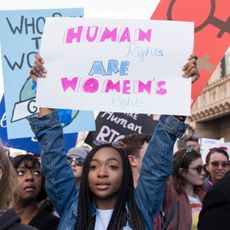 36 Ways Women Still Aren't Equal to Men
36 Ways Women Still Aren't Equal to MenIt's just one of the many ways women still aren't equal to men.
By Brooke Knappenberger Last updated
-
 How New York's First Female Governor Plans to Fight for Women If Reelected
How New York's First Female Governor Plans to Fight for Women If ReelectedKathy Hochul twice came to power because men resigned amid sexual harassment scandals. Here, how she's leading differently.
By Emily Tisch Sussman Last updated
-
 Why the 2022 Midterm Elections Are So Critical
Why the 2022 Midterm Elections Are So CriticalAs we blaze through a highly charged midterm election season, Swing Left Executive Director Yasmin Radjy highlights rising stars who are fighting for women’s rights.
By Tanya Benedicto Klich Published
-
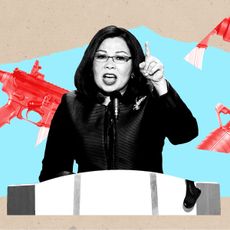 Tammy Duckworth: 'I’m Mad as Hell' About the Lack of Federal Action on Gun Safety
Tammy Duckworth: 'I’m Mad as Hell' About the Lack of Federal Action on Gun SafetyThe Illinois Senator won't let the memory of the Highland Park shooting just fade away.
By Sen. Tammy Duckworth Published
-
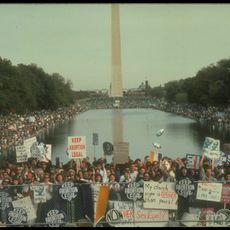 Roe Is Gone. We Have to Keep Fighting.
Roe Is Gone. We Have to Keep Fighting.Democracy always offers a path forward even when we feel thrust into the past.
By Beth Silvers and Sarah Stewart Holland, hosts of Pantsuit Politics Podcast Published
-
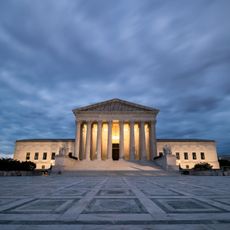 The Supreme Court's Mississippi Abortion Rights Case: What to Know
The Supreme Court's Mississippi Abortion Rights Case: What to KnowThe case could threaten Roe v. Wade.
By Megan DiTrolio Published
-
 Sex Trafficking Victims Are Being Punished. A New Law Could Change That.
Sex Trafficking Victims Are Being Punished. A New Law Could Change That.Victims of sexual abuse are quietly criminalized. Sara's Law protects kids that fight back.
By Dr. Devin J. Buckley and Erin Regan Published
-
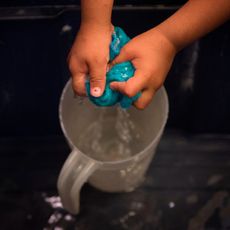 My Family and I Live in Navajo Nation. We Don't Have Access to Clean Running Water
My Family and I Live in Navajo Nation. We Don't Have Access to Clean Running Water"They say that the United States is one of the wealthiest countries in the world. Why are citizens still living with no access to clean water?"
By Amanda L. As Told To Rachel Epstein Published